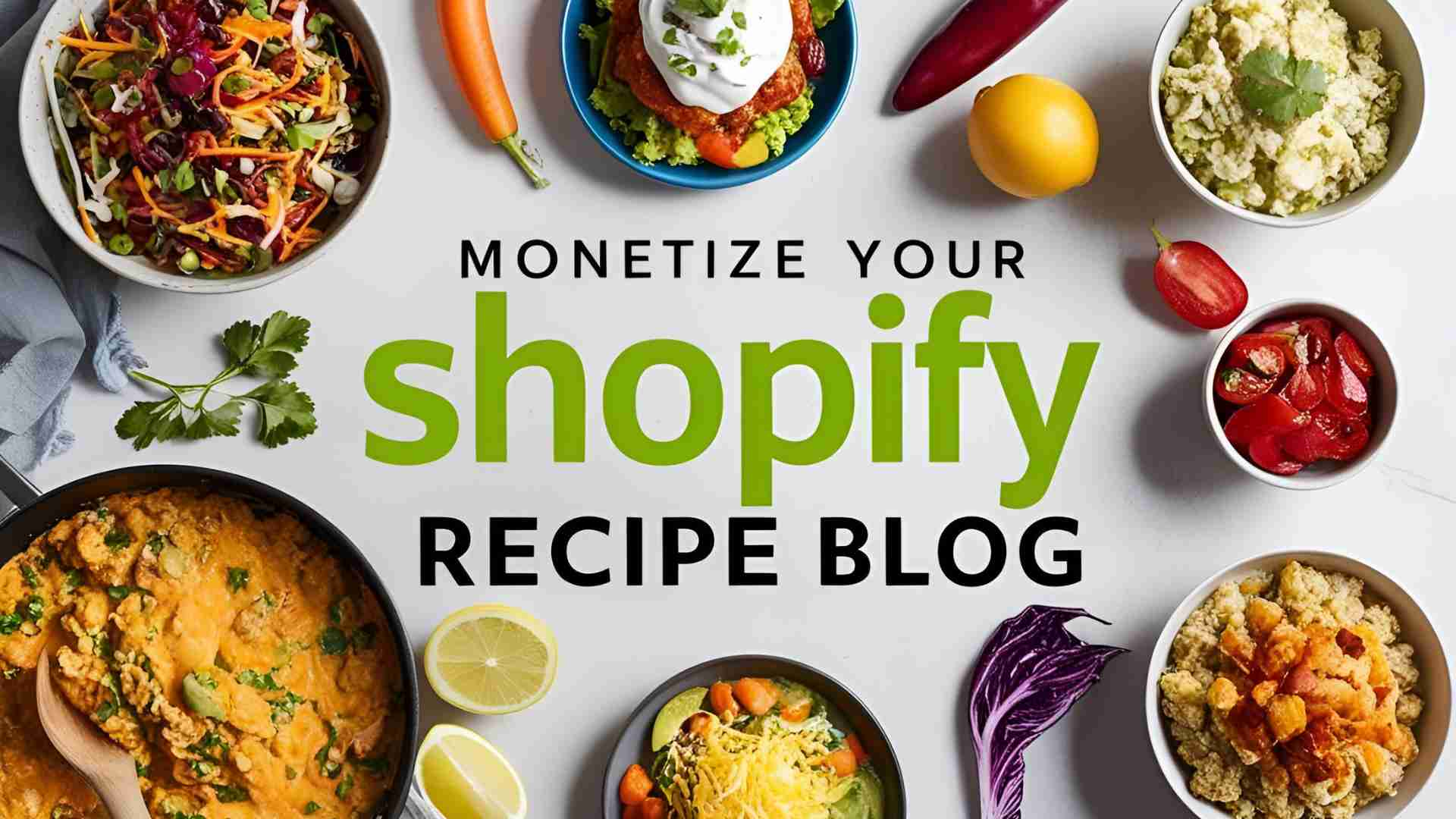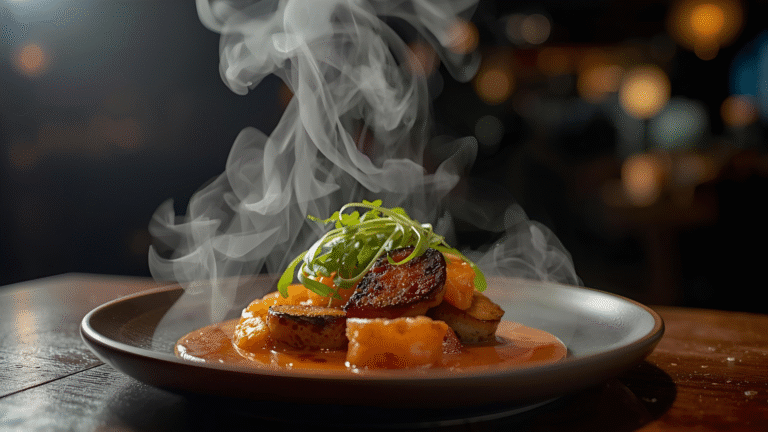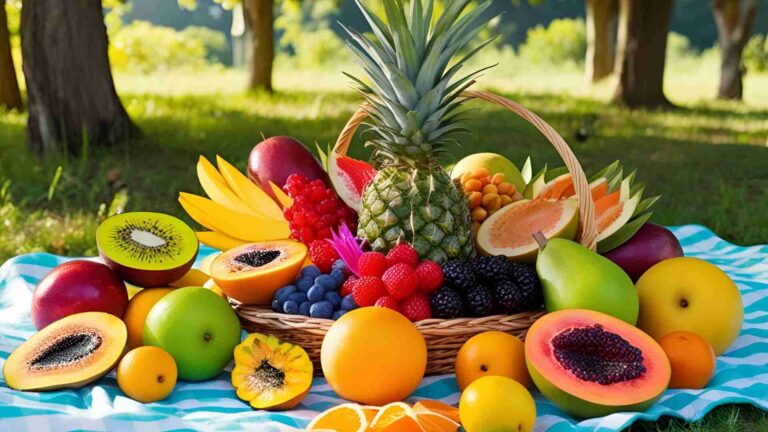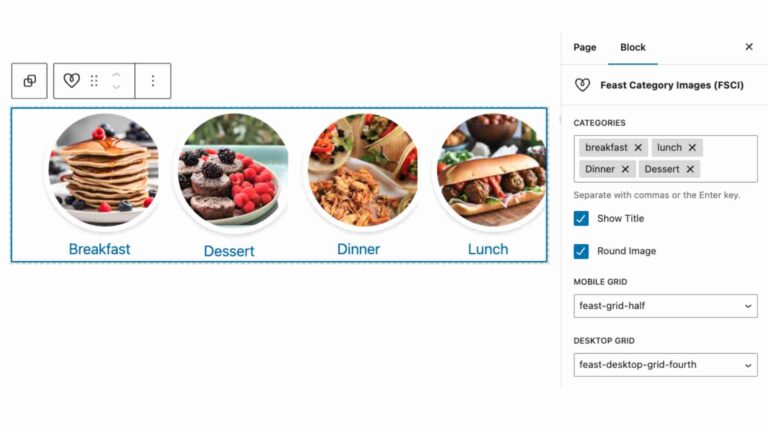5 Proven Ways to Monetize Your Shopify Recipe Blog
Discover 5 proven ways to monetize your Shopify recipe blog, from shoppable recipes to affiliate marketing, and turn your passion into profit.
Food blogs have exploded in popularity, fueled by a global love for cooking and sharing recipes. However, creating high-quality content is only half the battle—monetizing your Shopify recipe blog can elevate it from a hobby to a thriving business. Whether you’re a seasoned food blogger or just starting, the strategies outlined here—shoppable recipes, affiliate marketing, brand partnerships, digital downloads, and display advertising—offer practical ways to generate revenue while keeping your audience engaged. With tools like Recipe Kit, you can streamline these processes, optimize for search engines, and track performance to ensure long-term success. Let’s explore how to turn your Shopify recipe blog into a money-making machine.
1. Create Shoppable Recipes
Shoppable recipes are a game-changer for food bloggers, allowing readers to purchase ingredients and kitchen tools directly from your blog. This not only enhances the user experience by simplifying meal prep but also drives direct sales and affiliate commissions. Tools like Recipe Kit make it easy to integrate shoppable features into your Shopify store, creating a seamless shopping experience.
Setting Up Shoppable Recipe Cards
Recipe Kit enables you to design interactive recipe cards that go beyond basic instructions. To create compelling shoppable recipes, include:
- Ingredient Lists: Provide exact measurements and link each ingredient to a product in your Shopify store or a retail partner’s site.
- Step-by-Step Instructions: Offer clear, concise directions to guide readers through the cooking process.
- High-Quality Photos: Showcase the finished dish with vibrant, professional images to entice readers.
- Cook Time and Servings: Include practical details to help with meal planning.
By linking ingredients to products, readers can add items to their cart without leaving your blog, increasing convenience and boosting sales.
Pairing Tools with Ingredients
To maximize revenue, recommend kitchen tools that complement your recipes. For example:
- Link a high-quality chef’s knife to a recipe requiring precise chopping.
- Suggest a pasta maker alongside specialty flour for homemade pasta recipes.
- Bundle complementary products, like olive oil and balsamic vinegar, to encourage larger purchases.
These pairings enhance the cooking experience and increase average order value by promoting relevant, high-quality products.
Tracking Sales Performance
Recipe Kit’s analytics dashboard provides valuable insights to optimize your shoppable recipes. Key metrics include:
| Metric | What It Tells You |
|---|---|
| Page Views | Identifies the most popular recipes. |
| Conversion Rate | Shows which recipes drive purchases. |
| Cart Additions | Tracks which ingredients are most purchased. |
| Average Order Value | Measures the effectiveness of product bundles. |
Use these insights to refresh recipes with seasonal ingredients or trending products, keeping your content relevant and engaging.
Chart: Shoppable Recipe Workflow
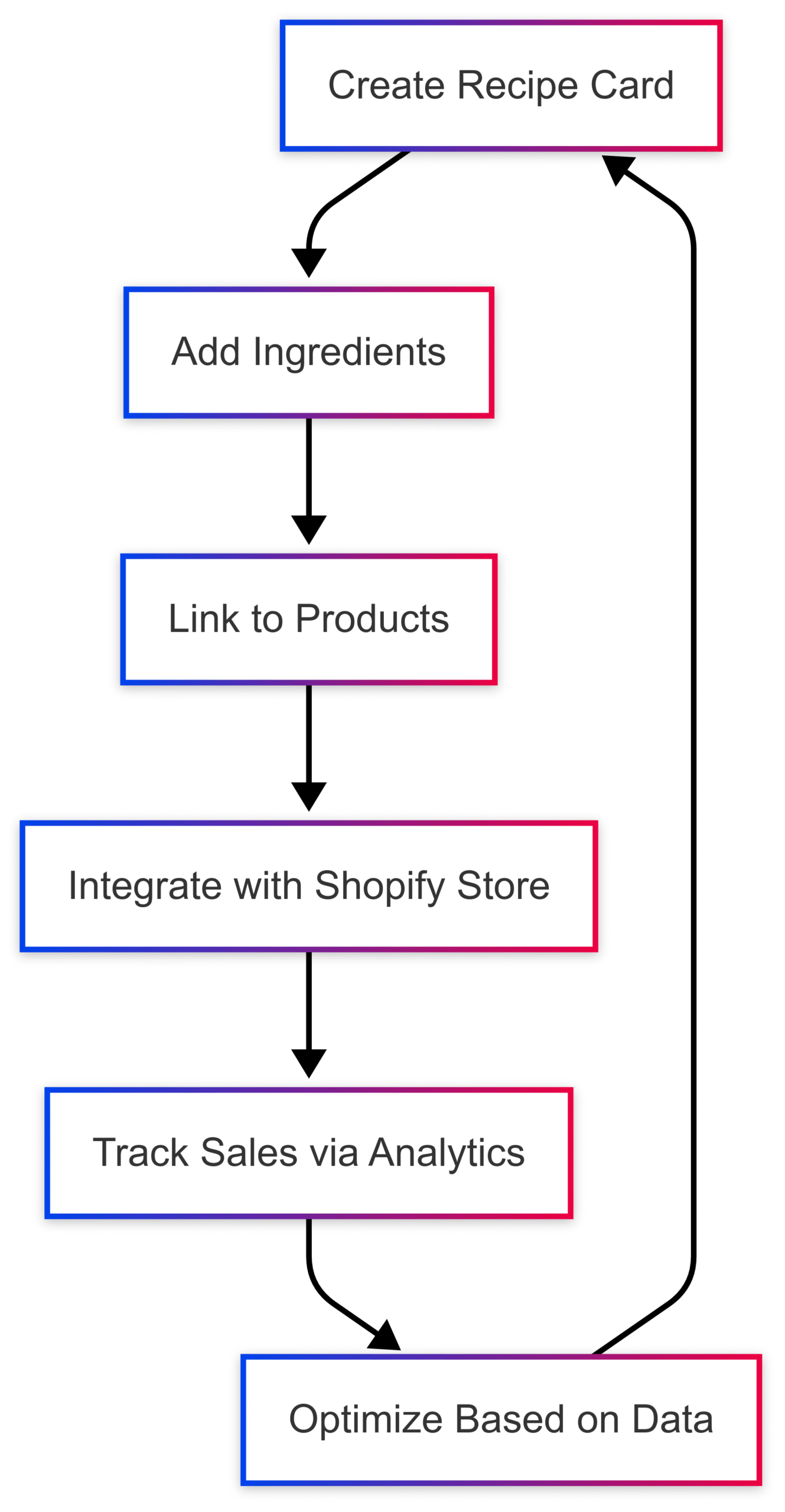
This workflow illustrates the cyclical process of creating, linking, tracking, and optimizing shoppable recipes to maximize revenue.
2. Leverage Affiliate Marketing
Affiliate marketing is a powerful way to earn passive income by recommending products you trust. By integrating affiliate links into your recipes, you can earn commissions while providing value to your audience.
Adding Affiliate Links
With Recipe Kit, embedding affiliate links is seamless. Focus on products that enhance the cooking experience, such as:
- Kitchen Tools: Recommend essentials like blenders, knives, or cookware.
- Ingredients: Highlight trusted brands for spices, oils, or specialty items.
- Accessories: Suggest items like measuring cups or storage containers.
Always disclose affiliate links prominently to comply with FTC guidelines, ensuring transparency and building trust. For example, include a notice like: “This post contains affiliate links, which means I may earn a commission if you purchase through them, at no extra cost to you.”
Collaborating with Brands
Partner with food and kitchen brands that align with your blog’s niche. Popular affiliate programs include:
| Program Type | Commission Range | Cookie Window |
|---|---|---|
| Food Suppliers | 7-15% | 7-30 days |
| Kitchen Equipment Retailers | Up to 30% | 30-90 days |
| Cooking Course Platforms | Up to 50% | 30-60 days |
To maximize earnings, bundle complementary products (e.g., a spice blend with a mortar and pestle) and track performance using affiliate dashboards. Authenticity is key—only promote products you genuinely use to maintain credibility.
Building Trust
As affiliate marketer Pat Flynn notes, “When your audience believes you have their best interests at heart and trusts your recommendations, then everyone benefits.” Share personal experiences with products and explain why they’re valuable to your recipes, fostering trust and driving conversions.
3. Secure Brand Partnerships
Brand partnerships offer a lucrative way to monetize your blog while expanding your reach. By collaborating with food and kitchen brands, you can create sponsored content that resonates with your audience.
Designing Sponsored Recipe Programs
Create sponsorship packages that outline clear deliverables, such as:
- Sponsored recipe posts with integrated product placements.
- Social media promotions featuring the brand’s products.
- Newsletter features or recipe videos showcasing the partnership.
- Recipe Kit integration for shoppable sponsored recipes.
Clearly define terms in your agreements, including timelines, content ownership, payment, and performance metrics, to ensure smooth collaborations.
Featuring Sponsored Products
Incorporate sponsored products naturally into your content. For example:
- Use high-quality images to show the product in action (e.g., a branded mixing bowl in a baking recipe).
- Share honest feedback about the product’s benefits.
- Provide cooking tips that highlight the product’s value.
Transparency is critical—disclose sponsorships clearly to maintain trust. For instance, include a statement like: “This recipe is sponsored by [Brand], but all opinions are my own.”
Tracking Partnership Success
Define goals for each partnership, such as increasing recipe engagement or growing your email list. Use Recipe Kit’s analytics to track performance metrics like click-through rates and sales from sponsored content. This data helps demonstrate value to partners and refine your strategy.
4. Sell Digital Downloads
Digital downloads, such as recipe e-books and premium content subscriptions, offer a scalable way to generate passive income. By packaging your culinary expertise, you can create products that appeal to your audience’s needs.
Creating Recipe E-books
Compile your best recipes into themed e-books, formatted professionally for a polished look. Potential collections include:
| Collection Type | Price Range | Content Description |
|---|---|---|
| Seasonal Collections | $14.99 – $19.99 | 25-30 recipes tailored to seasons |
| Dietary Specific | $19.99 – $24.99 | 40+ recipes for diets like keto or vegan |
| Quick Meals | $11.99 – $15.99 | 20-25 recipes under 30 minutes |
| Holiday Bundles | $21.99 – $25.99 | Full holiday menus with shopping lists |
Enhance e-books with high-quality images, step-by-step instructions, and bonus content like meal prep tips. Use Recipe Kit to ensure accurate formatting and SEO optimization for better discoverability.
Offering Premium Recipe Access
Consider a subscription model for exclusive content, such as:
- Early access to new recipes.
- Exclusive recipe collections.
- Downloadable meal plans or grocery lists.
Price subscriptions between $5–$15 per month, with a 14-day trial to attract sign-ups. Automate delivery through Shopify and include clear terms of use to protect your content.
Optimizing for Sales
Use Recipe Kit’s SEO tools to add keywords and rich snippets to your digital products, improving search rankings. Promote e-books and subscriptions via social media, newsletters, and blog posts to drive sales.
5. Implement Display Advertising
Display advertising provides a steady income stream when done thoughtfully. By placing ads strategically, you can monetize your blog without compromising user experience.
Strategic Ad Placement
Recipe Kit’s customizable layouts make it easy to integrate ads seamlessly. Effective placements include:
| Ad Location | Why It Works | Tips for Success |
|---|---|---|
| Above Recipe Card | High visibility at the start of content | Use non-intrusive ad sizes |
| Sidebar | Visible without disrupting reading | Optimize for mobile displays |
| Between Instructions | Blends naturally with content flow | Match ad style to your blog’s aesthetic |
| Bottom of Post | Ideal for related product promotions | Include clear calls-to-action |
Use lightweight ad formats to maintain fast page load times, and leverage Recipe Kit’s optimization tools to ensure a smooth user experience.
Choosing Ad Networks
Select ad networks tailored to food blogs, such as Mediavine, AdThrive, or Google AdSense, which offer food-relevant ads. Look for networks with:
- High click-through rates and competitive payouts.
- Detailed reporting tools to track performance.
- Mobile-optimized ad formats for recipe searches.
Hanna Savoie, Cofounder of Small Plugins, emphasizes, “Investing in high-quality SEO strategies directly correlates with increased traffic and better monetization opportunities for food bloggers.” Use Recipe Kit’s analytics to monitor ad performance and adjust placements for optimal revenue.
Balancing Ads and Content
Keep recipes the focus by limiting ad frequency and ensuring they complement your content. Test different formats to find what resonates with your audience while maintaining a positive user experience.
Enhancing Content with AI and Shopify Tools
To stand out in a competitive market, leverage Shopify’s ecosystem and AI tools like Recipe Junction to create engaging content.
Understanding Your Audience
Conduct surveys or analyze social media trends to identify preferences (e.g., vegan, quick meals). Study competitors’ content styles and engagement strategies to refine your approach.
Planning and Creating Content
- Content Calendar: Schedule posts around holidays or seasonal trends (e.g., grilling recipes in summer).
- High-Quality Recipes: Test recipes for accuracy and add unique twists to differentiate them.
- Professional Photos: Use natural lighting and appealing styling to make dishes visually irresistible.
Optimizing for SEO
Use tools like Google Keyword Planner to find relevant keywords. Optimize titles, meta descriptions, and image alt text to boost search rankings. Recipe Kit’s automatic schema generation enhances visibility in search results.
Integrating with Shopify
Link ingredients to products in your Shopify store and create “Shop the Recipe” sections for one-click purchases. Cross-promote kitchen tools or related products to increase sales.
Leveraging Social Media and Video
Share visually appealing content on Instagram, Pinterest, and Facebook. Create short recipe videos or host live cooking demos to engage visual learners and drive traffic.
Using AI for Recipe Creation
AI tools like Recipe Junction can generate unique recipes based on trends or user preferences, saving time and ensuring fresh content. Offer personalized recipe suggestions to enhance user engagement.
Tracking and Improving Performance
Use Shopify’s built-in analytics and Google Analytics to monitor key metrics like page views, engagement, and conversions. Recipe Kit’s dashboard provides insights into shoppable recipe performance, affiliate link clicks, and ad revenue. Gather audience feedback through comments or surveys to refine your strategy.
Example: Performance Analysis Table
| Strategy | Key Metrics | Optimization Tips |
|---|---|---|
| Shoppable Recipes | Conversion rate, cart additions | Highlight popular ingredients, update seasonally |
| Affiliate Marketing | Click-through rate, commissions | Promote trusted products, disclose links |
| Display Advertising | Ad impressions, revenue | Test placements, optimize for mobile |
Regularly analyze data to identify trends, such as high-performing ingredients (e.g., artichoke hearts), and create new content to capitalize on them.
Conclusion
Monetizing your Shopify recipe blog is about combining engaging content with strategic revenue streams. Shoppable recipes, powered by tools like Recipe Kit, drive direct sales by linking ingredients to products. Affiliate marketing and brand partnerships offer passive income through trusted recommendations, while digital downloads and display advertising provide scalable revenue. By optimizing for SEO, leveraging AI tools, and tracking performance, you can grow your blog into a profitable business. Start implementing these strategies today to turn your culinary passion into a sustainable income source.
FAQs
Use Shopify’s analytics to monitor product performance and customer behavior. Integrate Google Analytics to track user interactions like link clicks and time spent on recipe pages. Optimize by highlighting top-performing recipes and experimenting with calls-to-action.
Disclose affiliate links clearly per FTC guidelines. Recommend products you genuinely use and share personal experiences to make endorsements authentic. Ensure products align with your audience’s interests to maintain credibility.
Choose networks with a strong reputation for food content, offering relevant ads, competitive payouts, and detailed reporting. Prioritize mobile-optimized formats and control over ad placements to balance revenue and user experience.
By following these strategies and leveraging tools like Recipe Kit, you can create a thriving Shopify recipe blog that delights your audience and generates consistent revenue.
Please share these 5 Proven Ways to Monetize Your Shopify Recipe Blog with your friends and do a comment below about your feedback.
We will meet you on next article.
Until you can read, Top 10 Tips for Creating Click-Worthy Recipe Images
